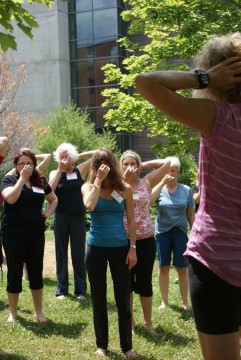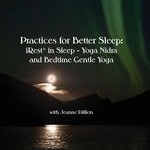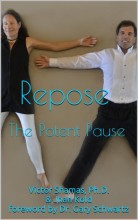 Welcome to the 60th (wow!) edition of the LifeForce Yoga Research & Reviews Newsletter, where this month you will find many important yoga studies reviewed as well as two cutting edge books on healing trauma and a yoga nidra CD for insomnia. My hope is that you will actually read all the way through, as this newsletter is a labor of love, and yes there’s been a lot of labor, as well as love that we’ve poured into its creation! Read More from Amy.
Welcome to the 60th (wow!) edition of the LifeForce Yoga Research & Reviews Newsletter, where this month you will find many important yoga studies reviewed as well as two cutting edge books on healing trauma and a yoga nidra CD for insomnia. My hope is that you will actually read all the way through, as this newsletter is a labor of love, and yes there’s been a lot of labor, as well as love that we’ve poured into its creation! Read More from Amy.
RESEARCH: Comparing Slow & Fast Pranayama Breathing

Although pranayama breathing has been studied seriously since the early 90’s, this new study, coming out of Pondicherry, may be the first to compare a month of regular slow breathing practice like alternate nostril nadi sodhana to rapid breathing practice like skull shining Kabalabhati, to a control group who did not do pranayama breathing practice for a month. In this randomized trial, involving approximately 90 healthy female (72) and male (19) subjects, the subjects practiced 30 minutes a day, three times a week, and were encouraged to continue their practice at home. According to Dr. Ananda Balayogi Bhavanani, one of the study’s authors and the Chairman of the International Centre for Yoga Education and Research at Ananda Ashram, Pondicherry, India (www.icyer.com), the fast breathing was practiced at two breaths per second, initially for 30 second then 45 and then 60 seconds for one round. Subjects began by practicing one round, and then up to 3 to 6 rounds per session with relaxation in between.
This study looked at a number of measures to determine pulmonary function parameters (PFT)—basically how well our respiratory system is functioning.
Results of the study show that both slow and fast pranayama practices have beneficial effect on PFT except respiratory pressure parameters, and the effect of fast pranayama was significantly more on forced expiratory function—no surprise, since fast breathing like kapalabhati emphasizes forceful exhalation through the nostrils. Both groups improved basic lung capacity and functioning.
According to the authors, “These changes by both pranayama techniques can be attributed to improved autonomic tone toward parasympathodominance resulting in a relaxed state of mind, better subjective well-being and concentration on the task, improved lung ventilation and strength of respiratory muscles.” My only wish was that in addition to pulmonary measurements, there had been psychosocial testing. Since both slow and fast breathing practices resulted in a “relaxed state of mind,” what was the difference, if any, on the effect on mood? In the field, anecdotally, we see that slow breathing, with an emphasis on the exhale, is calming, while more rapid breathing is both stimulating (mind feels more focused) and relaxing (body is relaxed).
T Dinesh1, GS Gaur2, VK Sharma2, T Madanmohan3, KT Harichandra Kumar4, AB Bhavanani, “Comparative effect of 12 weeks of slow and fast pranayama training on pulmonary function in young, healthy volunteers: A randomized controlled trial,” International Journal of Yoga, 2015, Volume : 8, Issue : 1, Page : 22-26
To read the full article, click here.
The paper is actually the third in a series of comparing fast and slow pranayama breathing. The links to the other two are below:
Effect of fast and slow pranayama practice on cognitive functions in healthy volunteers
RESEARCH: Evidence Accumulating for Yoga in Schools
Following their LifeForce Yoga workshops and trainings, I’ve talked to many classroom teachers, from elementary to high school to special needs, who have noticed a marked change in students’ behavioral issues like hyperactivity, as well as positive mood changes and in their students’ ability to focus, after the teacher introduced a simple yoga practice, adapted for the classroom. While their stories are interesting, and I’ve mentioned a few of them elsewhere, (Yoga Skills for Therapists), these accounts are anecdotal and not evidence based. However, thanks to the efforts of dedicated researchers at Brigham and Women’s Hospital Harvard Medical School, at Kripalu, at Brown University and elsewhere, we have two new preliminary studies that continue to suggest that a yoga class may 1) reduce cortisol level (stress hormone) and teacher-perceived stress in an elementary aged population and 2) provide stress-reducing benefits for high school aged adolescents that include reduction in anger, depression and fatigue as compared to a standard high school physical education (PE). These two new studies join a growing number of pilot studies that suggest that the benefits of yoga that adults experience in reducing physiological and psychological stress are also observed in children and adolescents in school-based settings.
The first article referred to above appears in the Journal of Evidence-Based Complementary & Alternative Medicine and is based on an uncontrolled study. This means that the students were measured against themselves, before and after the intervention, as opposed to a control group who did another activity like PE. 18 Second graders and 18 third graders, whose parents had given permission, were offered a 10-week, once-a-week, in classroom course that followed the Yoga 4 Classrooms protocol, developed by Lisa Flynn. The 30-minute session included breathing exercises, physical exercises and postures, meditation techniques and relaxation. Unique to this in-classroom approach is the fact that “students kept their shoes on and remained seated or standing next to their desks, while practicing yoga posture variations.” The poses were adapted to the student’s physical abilities, while the students were encouraged to “listen to their bodies” and had permission to modify the pose. The relaxation for classroom use was also unique. “Relaxation involved students progressively relaxing into ‘‘Desk Rest Pose’’ (heads down on the desk) while listening to a themed visualization, followed by a closing song/chant and a few final deep breaths. To read more about this approach to in-class yoga, click here.
Students’ salivary cortisol (the stress hormone) responses were assessed at 3 time points. Classroom teachers also documented their perceptions of the effects of the intervention on students’ cognitive, social, and emotional skills. Second graders showed a slight decrease in cortisol from before to after the 10-week yoga intervention. However, when presented with a challenging cognitive task both grades showed significant decreases in cortisol from before to after the task. Lead author Bethany Butzer says, “the fact that the objective data (cortisol) showed a pattern of change that was consistent with the subjective data (teacher ratings) lends at least some credence to the possibility that the changes might have been due to the intervention. Specifically, 2nd graders, but not 3rd graders, showed a decrease in baseline cortisol from before to after the intervention. Consistent with the findings for cortisol, the second grade teacher observed greater improvements in his/her students’ cognitive, social, and emotional skills.”
This study suggests that the second grade students’ psycho-social improvement may be linked to the reduction in cortisol attributed to the yoga intervention. In reflecting on the difference between the second and third grade, Lisa Flynn, author of Yoga for Children and the Yoga 4 Classrooms Activity Card Deck, who designed the yoga protocol and trained the classroom teachers, said, “It’s interesting to note, that the 2nd grade classrooms had more children with special needs diagnosis than did the 3rd grade classroom. By all accounts, these were the children who seemed to benefit the most from the intervention.”
Although not conclusive, the study points, along with others, to the efficacy of including yoga in the schools to help students cope with stress and regulate their emotions and their behavior.
Butzer B1, Day D2, Potts A2, Ryan C2, Coulombe S2, Davies B2, Weidknecht K2, Ebert M3, Flynn L4, Khalsa SB5, “Effects of a Classroom-Based Yoga Intervention on Cortisol and Behavior in Second- and Third-Grade Students: A Pilot Study.” Journal of Evidence-Based Complementary & Alternative Medicine, November, 2014.
You can read the abstract here.
In the second study, one Kripalu Yoga in the Schools (KYIS) class, developed by the Kripalu Institute for Extraordinary Living, was compared to one PE class in a high school setting. The students participated in the KYIS intervention for 3 weeks with five lessons per week (15 lessons total) in non-consecutive weeks that alternated with PE. Students completed self-report psycho-social measurements immediately before and after a single KYIS yoga class and a single PE class one week later.
While the 47 students who participated in both PE and yoga reported significant decreases in confusion and tension, with no significant difference between the two groups, there were significantly greater decreases in anger, depression, and fatigue from before to after yoga compared to PE. In addition, the researchers found significant reductions in negative affect after yoga but not after PE.
While the second study included a control group, neither study was randomized and both were small. But these two studies join an expanding body of preliminary research in this area, ripening the field for a major, well-funded investigation.
Joshua C. Felver & Bethany Butzer & Katherine J. Olson & Iona M. Smith & Sat Bir S. Khalsa, “Yoga in Public Schools Improves Adolescent Mood and Affect,” Contemporary School Psychology, Sept., 2014
You can read the abstract here.
If you have questions about either study or would like to see a PDF, contact Bethany Butzer through her website at http://www.bethanybutzer.com/.
RESEARCH: Yoga May Effect Mood, Even if You Are No Longer Practicing!
LifeForce Yoga Practitioner Patricia Anne Kinser, PhD, WHNP-BC, RN, and her colleagues have continued to investigate the effects of yoga as an intervention for women with major depressive disorder (MDD). Kinser’s published studies with this same population, reviewed previously in these Newsletters, used an 8-week yoga intervention consisting of a yoga class protocol that was a combination of LifeForce Yoga and Iyengar Yoga. The home practice component included the LifeForce Yoga to Beat the Blues-Level 1 DVD.
The initial study was randomized and controlled, with the control group meeting weekly for a manualized health education session. The current study, published in the Archives of Nursing, assesses those women who were in the two original groups and who gave permission for a one year follow-up. This may be the first yoga study to use standardized outcome measures and such a long follow-up period. The most encouraging aspect of this study is that, as the authors state, “Whether or not an individual continues with yoga practice, simple exposure to a yoga intervention appears to provide sustained benefits to the individual. This is important because it is rare that any intervention, pharmacologic or non-pharmacologic, for depression conveys such sustained effects for individuals with MDD, particularly after the treatment is discontinued.”
The research article is an interesting read, as it includes both qualitative data with quotes from participants about their experience of yoga. Even if they had not continued to practice yoga on their own in or in classes, participants in the yoga group said that yoga became a “tool in the toolbox” that could support them in managing mood and stress. Participants were able to see themselves in a new light, even when their mood might plummet, realizing that “I am more than my depression.” Most of the participants continued to use techniques learned during their yoga intervention, even if they didn’t actually roll out a mat.
The sample size of those participating in the follow-up was small, so no formal statistical analysis is included. However, the results clearly indicate a trend: Those in the control group had a recurrence of symptoms, while those who had the 8-week yoga intervention had continued mood improvement, even if they were no longer practicing. Those who continued to practice, even if infrequent, showed continued improvements in depression, stress, and ruminations over time.
Patricia Anne Kinser, R.K. Elswick, Susan Kornstein, “Potential long-term effects of a mind-body intervention for women with major depressive disorder: Sustained mental health improvements with a pilot yoga intervention” Archives of Psychiatric Nursing, 2014 Dec;28(6):377-83.
To read the abstract click here. If you would like to read the full article, please email Dr. Kinser.
Research for Researchers: A Suggested Framework
 LifeForce Yoga Practitioner, Patricia Kinser, PhD, RN, WHNP-BC, assistant professor at Virginia Commonwealth University is the lead author of a paper useful to other researchers seeking a theoretical and practical framework for the study of yoga as an intervention for women suffering from stress and depression. The article outlines the potential value for yoga as a treatment, especially for women who may be reluctant to take medication. Many researchers, say the authors, “suggest that women with depression seek out complementary therapies because the usual allopathic pharmacologic care does not adequately address their individual symptoms or … may have unappealing side effects and expense.”
LifeForce Yoga Practitioner, Patricia Kinser, PhD, RN, WHNP-BC, assistant professor at Virginia Commonwealth University is the lead author of a paper useful to other researchers seeking a theoretical and practical framework for the study of yoga as an intervention for women suffering from stress and depression. The article outlines the potential value for yoga as a treatment, especially for women who may be reluctant to take medication. Many researchers, say the authors, “suggest that women with depression seek out complementary therapies because the usual allopathic pharmacologic care does not adequately address their individual symptoms or … may have unappealing side effects and expense.”
The lay reader may find this article a bit dense, but scientists seeking an overview of considerations in conducting research studies on yoga will find a wealth of angles from which to view outcomes beyond the customary self-reporting of psychosocial measures. One angle of research is the investigation of GABA levels as indication of improvement, as Chris Streeter has been doing. Her research “suggests that yoga corrects underactivity of the inhibitory neurotransmitter gamma amino-butyric acid [GABA] with resultant decreases in depression symptoms.”
Scientists might also consider the brain changes seen in depression, as for example hippocampal shrinkage, and the study of the reversal of these changes through soothing practices like yoga. Another angle of investigation the authors explore is based on the latest findings in epigenetics related to depression, i.e., “emerging evidence suggests that depression is related to alterations in biological markers, such as inflammatory cytokines and related DNA methylation patterns…” Might yoga, as the authors suggest, have a mitigating influence on inflammatory conditions and even have the potential to change our DNA? The authors suggest this might be an avenue for further research. “Remarkable findings from a recent study suggest that the therapeutic potential of interventions involving mindfulness may stem partially from the epigenetic control of inflammatory processes (Kaliman et al. 2014).” The authors go on to say, “Yogic practices that enhance stress regulation by inducing relaxation appear also to induce epigenetic changes in the expression of proteins involved in energy metabolism, mitochondrial function, insulin secretion, telomere maintenance, and inflammation.”
Patricia A. Kinser & Debra E. Lyon, “A conceptual framework of stress vulnerability, depression, and health outcomes in women: potential uses in research on complementary therapies for depression.” Brain and Behavior, 2014, 4(5), 665-674. DOI: 10.1002/brb3.249.
Review: Practices for Better Sleep: iRest in Sleep – Yoga Nidra and Gentle Bedtime Yoga CD by Jeanne Dillion
 Reviewed by Rose Kress ERYT-500, LFYP-2, LFYE, LifeForce Yoga Education Director. Rose began practicing yoga more than 15 years ago and has been teaching since 2004. In that time she has focused on the therapeutic aspects of yoga – for the body, mind and soul. Rose teaches class and workshops throughout the Tucson area and has been blessed to teach classes at The Crossings in Austin, TX, at Kripalu in Lenox, MA and at the Flagstaff Yoga Festival and Bisbee Yoga Expo under the guidance of her teacher, Amy Weintraub. Rose has also studied with Rama Jyoti Vernon and has taken the Functional Yoga Therapy Training with Maria KaliMa. Rose is the Program Manager of the LifeForce Yoga Healing Institute and travels with Amy to assist her in LifeForce Yoga Practitioner Trainings (www.yoginirose.com).
Reviewed by Rose Kress ERYT-500, LFYP-2, LFYE, LifeForce Yoga Education Director. Rose began practicing yoga more than 15 years ago and has been teaching since 2004. In that time she has focused on the therapeutic aspects of yoga – for the body, mind and soul. Rose teaches class and workshops throughout the Tucson area and has been blessed to teach classes at The Crossings in Austin, TX, at Kripalu in Lenox, MA and at the Flagstaff Yoga Festival and Bisbee Yoga Expo under the guidance of her teacher, Amy Weintraub. Rose has also studied with Rama Jyoti Vernon and has taken the Functional Yoga Therapy Training with Maria KaliMa. Rose is the Program Manager of the LifeForce Yoga Healing Institute and travels with Amy to assist her in LifeForce Yoga Practitioner Trainings (www.yoginirose.com).

Jeanne Dillion, is the director of a therapeutic yoga studio in Boise, Idaho, a Certified Yoga Therapist and a Certified iRest® Teacher, who has studied with psychologist and yogi Richard Miller. Dillion offers yoga nidra (deep yoga relaxation) iRest practices on her website for adults and children. In this CD, Dillion offers two practices designed to help the listener fall asleep and stay asleep through the entire night.
The first practice is a 16 minute gentle yoga practice. The yoga is mostly floor work with a little standing with the aide of the side of the bed. Dillion cues the movement with the breath to calm the mind. The practice itself is gentle with slow movements. She gives clear and direct instructions with many opportunities to dive deeper into sensation in each pose. At the end of the practice, the listener experiences “relaxation and ease as the body makes its way into bed.”
The 30 minute iRest protocol begins with inviting gratitude to arise, allowing “feelings of blessings to come to you,” then moving into intention, heartfelt prayer, and developing the inner resource. As she guides the listener through awareness of the body and breath, Dillion uses language that invites awareness of the body moving or falling into sleep. Over and over she cues to the body and mind falling gently into restfulness and sleep. She also includes awareness of the bliss body, the “underlying joy of your true nature” as you enjoy falling into sleep. Dillion plants the seed of the body and mind sleeping
restfully throughout the entire night. Most, if not all, listeners will be asleep by the end of the practice.
You can order the CD by mail from Dillion’s website or download the mp3.
Included on this CD is a brief introduction of iRest, or Integrative Restoration, developed by Richard Miller. Dillion references a number of iRest studies with various populations, including the homeless, children, individuals with Multiple Sclerosis, and at Walter Reed Army Hospital. You can find a research study on iRest Yoga Nidra on Combat-Related Post-Traumatic Stress Disorder in Newsletter 39.
An introduction to iRest yoga nidra is included in the LifeForce Yoga Practitioner Training. Click here to learn more about the training.
Review: Letting Go of Destructive Behaviors: A Workbook of Hope and Healing by Lisa Ferentz
Reviewed by Rose Kress ERYT-500, LFYP-2, LFYE, LifeForce Yoga Education Director
 Many of us have experienced traumatic events during the course of our lives. Some of us did not have the skills or the support system to process these events. So, we developed some sort of self-soothing behavior that helped us to cope with the event. At the time, that behavior was supporting us in some fashion, but as we age, this behavior can become self destructive and even destroy meaningful relationships. This is the kind of destructive behaviors that Lisa Ferentz addresses in her workbook. Her goal is to support the reader in exploring these behaviors in a non-judgmental way and begin the process of undoing the patterns that no longer serve us.
Many of us have experienced traumatic events during the course of our lives. Some of us did not have the skills or the support system to process these events. So, we developed some sort of self-soothing behavior that helped us to cope with the event. At the time, that behavior was supporting us in some fashion, but as we age, this behavior can become self destructive and even destroy meaningful relationships. This is the kind of destructive behaviors that Lisa Ferentz addresses in her workbook. Her goal is to support the reader in exploring these behaviors in a non-judgmental way and begin the process of undoing the patterns that no longer serve us.
Ferentz begins her workbook by encouraging the reader to develop the qualities of courage and curiosity along their healing path, i.e., courage to look at behaviors objectively and curiosity to delve a little deeper into the source. Change and healing are not easy, but these attitudes of curiosity and courage can help to maintain the process.
The process of healing begins with identifying destructive behaviors. Once identified, the reader is taken through a process of exploring the positive and negative consequences of engaging in addictive behaviors. She says, “Understanding the pay-off can reduce the confusion and shame associated with why you keep going back to the behaviors.” When the reader understands the downsides of his/her actions the opportunity arises to re-evaluate whether or not those actions are self-serving and that there may be a better way. In yoga, this identification that something is not right and the desire to change it, is known as tapas, or a commitment to making changes and doing things differently. This commitment is needed throughout the entire process.
Once destructive behaviors are identified, Ferentz leads the reader deeper into the exploration of why people engage in self-destructive behaviors. It is a process of connecting these behaviors to specific experiences in the “pain narrative.” Ferentz says, “What you have been doing makes sense given what you have experienced in the past.” Uncovering the possible connections between self-destructive behaviors and past traumas helps to unlock the unconscious reactions to current triggers that cause us to respond by engaging in these behaviors. The reader is also encouraged to look at these behaviors through a “strengths-based ‘de-stigmatized’ lens.” Meaning, these behaviors are not a sign of weakness, rather they are “creative coping strategies in response to very real emotional and psychological pain.” In yoga, this process of introspection, or self-study, is called svadyaya.
Standing in that fire of commitment and self-study is challenging, to say the least. If that was all you did, you might burn up! Ferentz strongly encourages the support of a mental health professional, while the reader works through this workbook. Together, with an MHP and the self-care techniques in this workbook that include yoga in general and LifeForce Yoga self-soothing practices, the reader can begin the process of letting go. This does not mean that the negative experiences that led to the self destructive behaviors are forgotten. Rather it means that the experiences and the behaviors no longer control actions or reactions in life. In yoga, this is called ishwarapranidana, letting go of outcomes and allowing ourselves to enjoy the present.
The reader is encouraged to write, draw, try new behaviors, practice visualizations and guided imagery exercises to engage both hemispheres of the brain in this healing process. Consider adding a daily yoga practice to support you even further. To purchase a copy of Letting Go of Destructive Behaviors click here.
For a self-soothing daily yoga practice, try one of the award-winning, evidence-based LifeForce Yoga to Beat the Blues DVDs.
NEWS: LifeForce Yoga Coming to Australia
For the first time, the Introductory LifeForce Yoga to Manage Your Mood, a prerequisite for the Lifeforce Yoga Practitioner Training, will be offered in Australia by senior practitioner Joanne Spence. Click here for more information about this exciting weekend.
MEDIA MENTION: Repose: The Potent Pause by Dr. Victor Shamas and Jhan Kold
The next time you lie down for a brief nap, a yoga nidra, or a relaxation, try using the position suggested in Repose. Read the science behind the resting pose suggested in Repose and the real-life stories of people who have reaped the benefits.
To purchase a copy of Repose: The Potent Pause click here.
 MEDIA MENTION: Finally a book from Rama Jyoti Vernon!
MEDIA MENTION: Finally a book from Rama Jyoti Vernon!
Rama Jyoti Vernon, internationally acclaimed yoga instructor and peace mediator has published the ultimate yoga practice book, Yoga: The Practice of Myth and Sacred Geometry. Rama’s extraordinary knowledge has shaped the foundation of contemporary yoga, and her unique approach to teaching yoga evolved from years of study and practice with many great Masters. For the first time, her work is codified into an impressive volume with over 200 pages of photos and instructions, with myths and therapeutic benefits associated with the asanas, and much more.
I’m excited to tell you about this because Rama Jyoti Vernon has been a pioneer in bringing yoga to America and has inspired my own practice in innumerable ways. Her heart-centered wisdom as a teacher of teachers and of hundreds of thousands of students around the globe shines through in this book. Not only does Rama’s understanding of the biodynamics of asana and breath make this a must read for everyone who aspires to serve others through the teaching of yoga, but the great value and humility she brings to the calling of yoga teacher–as “servant or fellow seeker,” lights the path through the darkness for countless fellow seekers, me included.
This book is hot off the press, so we will publish a full review in the next newsletter. For now you can order individual books here: 877-603-4400, 928-203-4400 yoga@7centers.com
For wholesale orders contact Andrea Loewenbein
NEWS & NOTES FROM AMY
December can be a challenging time for everyone, whether or not we suffer from mood disorders. We would all like to be a loved and loving member of a warm-hearted and nonjudgmental family, especially at this celebratory time of year, but the reality is that many of us are not. That’s why a yoga practice that puts us in touch with moments that transcend our stories, our circumstances, our moods, is so important at this time of year. If you’re familiar with LifeForce Yoga, you know that many such simple practices that remind us of our wholeness don’t require a yoga mat. Some of these ancient practices are now evidence-based. You can try out a few from the free practice section on our website here.
It’s hard to believe that, with contributions from other LifeForce Yoga Practitioners, I’ve written 60 research and review newsletters. It truly is a labor of love, because although it takes effort to publish this every 6 weeks or so, it is with great pride and enthusiasm that I read and review the ever-expanding body of research that suggests that yoga is an effective treatment for depression, anxiety and trauma. I am proud to see that LifeForce Yoga Practitioners like Dr. Patricia Kinser at Virginia Commonwealth University and friends and colleagues like Dr. Sat Bir Khalsa at Brigham and Women’s Hospital Harvard University, Dr. Ananda Balayogi Bhavanani at the International Centre for Yoga Education and Research at Ananda Ashram, Pondicherry, India, and organizations like the International Association of Yoga Therapists and the Kripalu Institute for Extraordinary Living are taking the lead in this research, and that my colleagues at Kripalu and elsewhere have developed effective secular yoga protocols for class room settings. We have research from these sources and from others in this newsletter.
In addition to the research, I also love reading and reviewing new books and CDs about yoga and mental health. LifeForce Yoga Director of Education Rose Kress reviews Dr. Lisa Ferentz’s new trauma survivors’ workbook, Letting Go of Destructive Behaviors and a new iRest Yoga Nidra CD for insomnia by Jeanne Dillion. I hope your holidays exceed your expectations, or better yet, I hope we can all drop our expectations, so that we appreciate what we receive. I look forward to meeting you on the yoga path.
A warm namasté,
Amy
EVENTS CALENDAR
To view our calendar of upcoming events click here.



Dear Amy,
Many thanks for including the beautiful guides to the practices “Power Hara Breath” and “Be still beloved, and know that you are safely held.” I have made a commitment to adding them to my morning.
Love,
Elizabeth